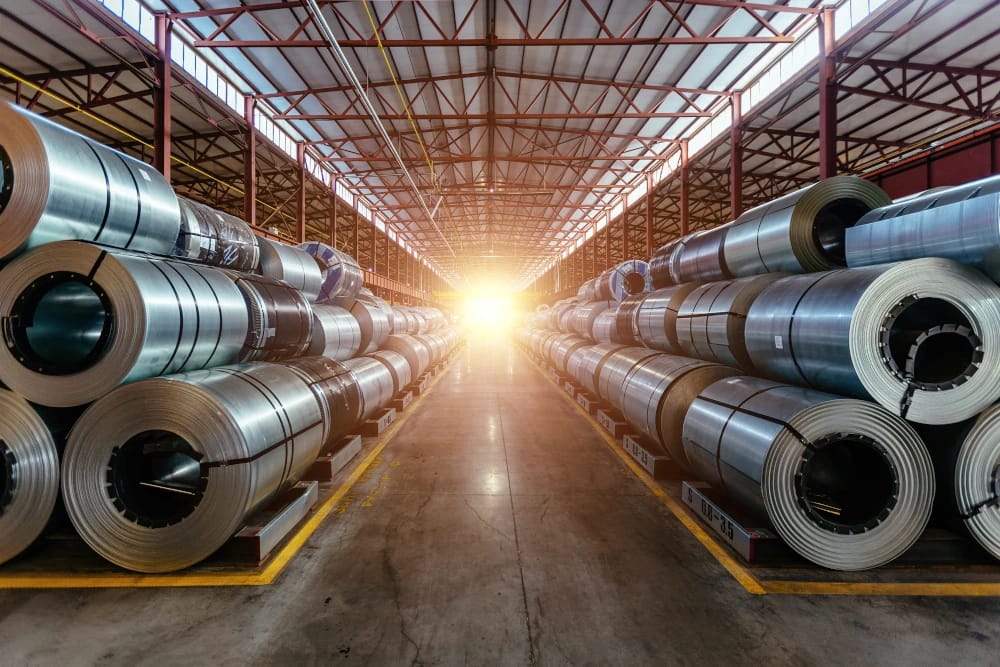L'acier : L'épine dorsale de l'industrie moderne et de l'innovation
Why Steel Matters
Steel is often referred to as the backbone of modern civilization. It is the material that has driven the progress of humanity for centuries, from the construction of monumental buildings to the development of transportation systems and machinery. Steel is so deeply ingrained in our daily lives that it is easy to overlook how vital it is in shaping the modern world.
But what makes steel so essential? Why has it remained the go-to material for industries ranging from construction and manufacturing to transportation and technology? In this article, we explore the history, properties, and modern applications of steel, along with its future in an increasingly sustainable world.
The History of Steel: From Ancient Times to Modern Industry
Steel has been used for thousands of years, with its origins dating back to around 1200 BCE in ancient civilizations. Early forms of steel were produced using simple techniques, such as the bloomery process, which involved heating iron ore in a charcoal furnace and then hammering the metal to remove impurities.

The production of steel began to evolve dramatically during the Industrial Revolution in the 19th century. The development of the Bessemer Process in the 1850s revolutionized steel production, making it faster and more cost-effective. This innovation led to an explosion of steel manufacturing, making steel more accessible and affordable for a wide range of applications.
Today, steel is produced using advanced techniques such as the electric arc furnace (EAF) process, which involves recycling scrap metal and melting it down to create new steel. This method is more energy-efficient and environmentally friendly, aligning with the growing push for sustainability in industry.
Steel Properties: Why It’s the Material of Choice
Steel’s remarkable properties make it the material of choice for countless industries. These properties include:
- Strength: Steel is incredibly strong, making it ideal for structural applications such as buildings, bridges, and skyscrapers. Its tensile strength allows it to support heavy loads and resist deformation under stress.
- Durability: Steel is highly durable and can withstand extreme temperatures, corrosion, and wear. This makes it suitable for long-lasting products such as tools, machinery, and transportation vehicles.
- Polyvalence: Steel can be alloyed with other elements, such as carbon, chromium, and nickel, to create different types of steel with unique properties. Stainless steel, for example, is resistant to corrosion, making it perfect for use in medical instruments, kitchen appliances, and construction materials.
- Recyclability: One of steel’s most significant advantages is its recyclability. Steel can be melted down and reformed indefinitely without losing its properties, making it a sustainable choice for manufacturing.
Steel in Modern Applications: Building the World Around Us
Steel is used in nearly every industry, making it one of the most critical materials for modern society. Here are some of the primary applications of steel in the modern world:
- Construction: Steel is the primary material used in the construction of buildings, bridges, and infrastructure. Its strength and durability allow architects and engineers to design structures that are both safe and aesthetically pleasing. Steel is also used in the creation of reinforced concrete, which is essential for building skyscrapers and large infrastructure projects.
- Transportation: Steel plays a vital role in the transportation industry, from automobiles to trains, ships, and airplanes. The strength and reliability of steel ensure that vehicles can endure the stresses of daily use while maintaining safety standards. In particular, automotive manufacturers rely on steel for the construction of car frames, engines, and other key components.
- Energy: Steel is crucial in the energy industry, especially in the construction of power plants, pipelines, and wind turbines. Steel pipes are used to transport oil and gas, while steel frames are used to support power plants and renewable energy infrastructure.
- Manufacturing: Steel is a key material in the manufacturing of tools, machinery, and appliances. The precision and durability of steel allow it to withstand the rigors of the manufacturing process and ensure the longevity of products.
The Future of Steel: Innovation and Sustainability
As the world moves toward more sustainable practices, the steel industry is evolving to meet new challenges. Innovations in steel production, such as the use of hydrogen in the reduction process, promise to significantly reduce carbon emissions and make steel production more environmentally friendly. Additionally, the increasing use of recycled steel in the manufacturing process is helping to reduce the need for raw materials, further decreasing the environmental impact.
Steel’s future also lies in its role in advanced technologies, such as 3D printing, which is revolutionizing manufacturing processes. High-strength steel alloys are being developed for use in everything from aerospace components to medical implants, opening up new possibilities for the material’s applications.
Conclusion: Steel’s Enduring Legacy and Future
Steel has been the driving force behind modern civilization, and its legacy is far from over. From building the tallest skyscrapers to powering transportation networks and manufacturing essential products, steel continues to shape the world in profound ways. As technology advances and sustainability becomes more important, steel will undoubtedly evolve to meet the challenges of the future, ensuring its place as one of the most valuable materials in the world.
L'acier : L'épine dorsale de l'industrie moderne et de l'innovation